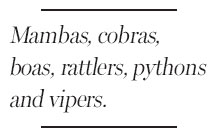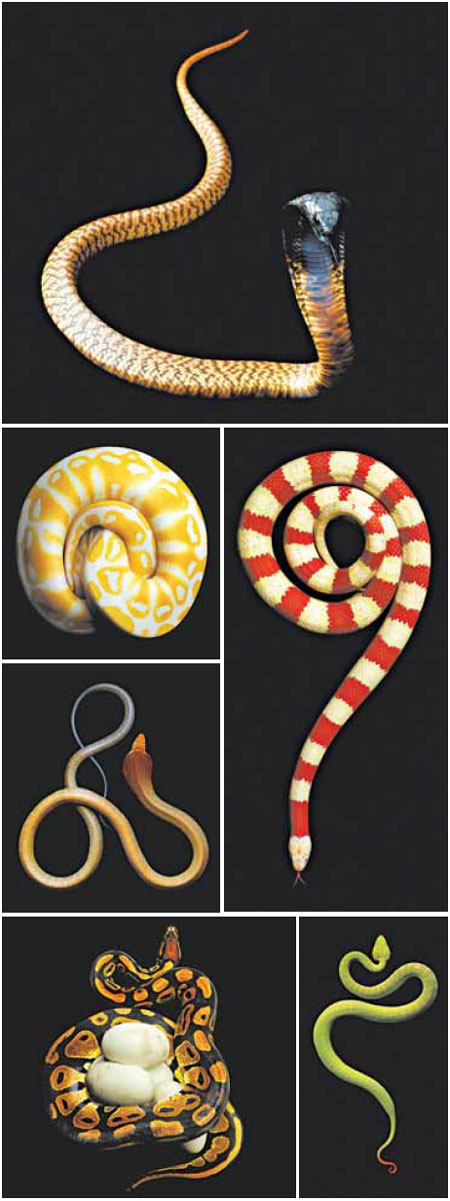Capturing the beauty of snakes
Updated: 2013-06-02 08:02
(The New York Times)
|
|||||||
|
Stunners best appreciated from afar. Clockwise, from top: a Moroccan cobra, an albino Honduran milk snake, a Vogel's pit viper, a royal python with eggs, a king cobra and an albino black pastel royal python. Photographs by Mark Laita |

Nature photography - stills and live action - sates our base animal curiosity. And ideally, it can make us pause in our mindless pursuit and slaughter of our fellow creatures. Given that we're a primal outdoors animal - both predator and prey - that has become a domesticated indoors animal, the best nature photography also gives us a heartbreaking window into what we've lost.
And, finally, as in the new book "Serpentine," by Mark Laita, the images shock us out of our modern human complacency and arrogance, remind us that all of us, human and nonhuman, are just trying to get by on this lonely planet.
In his prologue Mr. Laita, whose last book was "Sea," tries to articulate what it is about snakes that spurred him to take on this project: "Attraction and repulsion. Passivity and aggression. Allure and danger. These extreme dichotomies, along with the age-old symbolism connected with snakes, are what first inspired me to produce this series."

Some 100 beauty shots show off snakes from every continent except Antarctica. There are mambas and cobras, kings and kraits, boas and rattlers, pythons and vipers. There is the blue beauty ratsnake and the hundred-pace snake, the rough-scaled death adder and the black-headed bushmaster.
All of them are stark and stunning against a black background, from the blunt white and black of the mussurana of Central and South America to the Times Square neon of the blue Malaysian coral snake.
From the spade-shaped wedge of head to the tapered tail, and all that sinuous muscle in between, these predatory geometries made me want to stroke the snake-laden pages. As Mr. Laita writes: "Their beauty heightens the danger. The danger amplifies their beauty."
And when we focus on their sheer, alien otherness, we feel more human - as Mr. Laita acknowledges at the end of "Serpentine," when he quotes the poet Rainer Maria Rilke: "Perhaps everything that frightens us is, in its deepest essence, something helpless that needs our love."
(China Daily 06/02/2013 page11)
